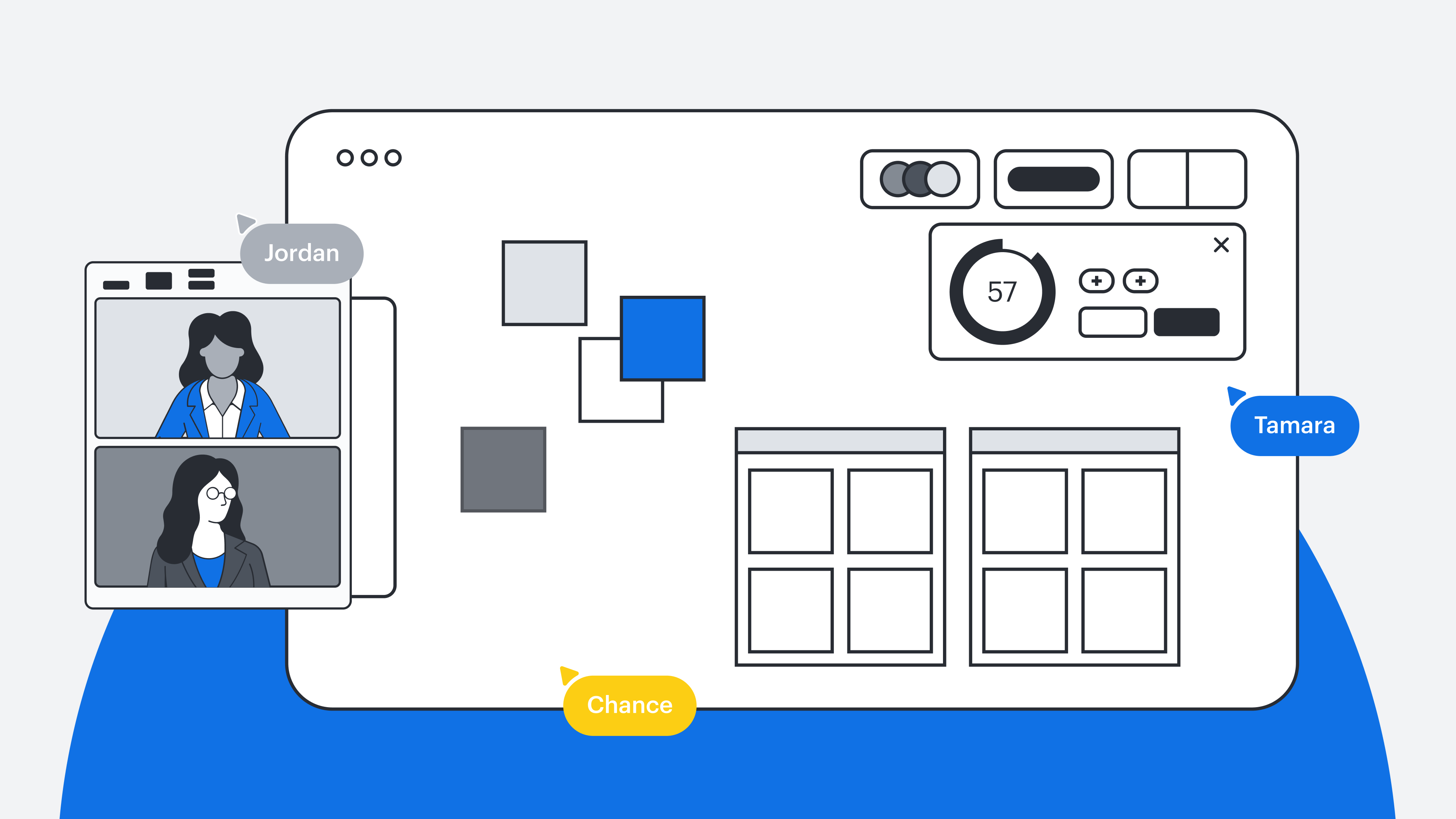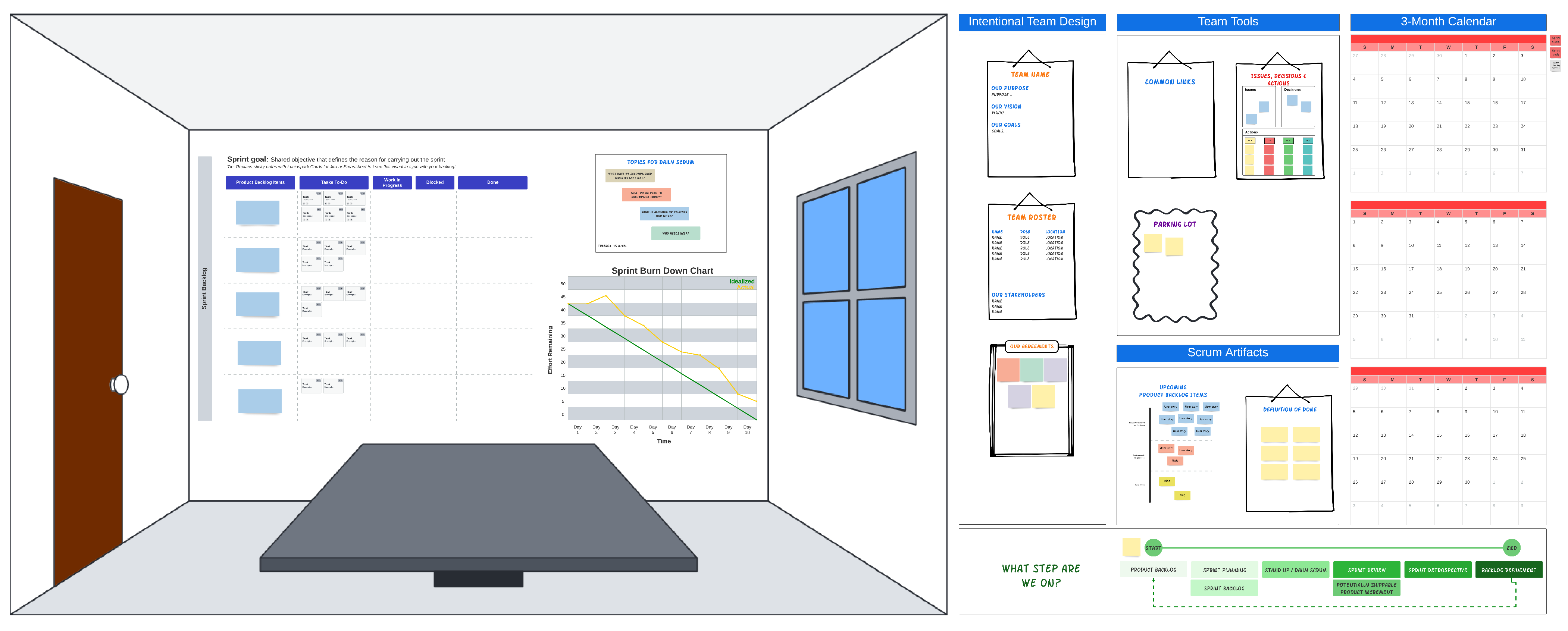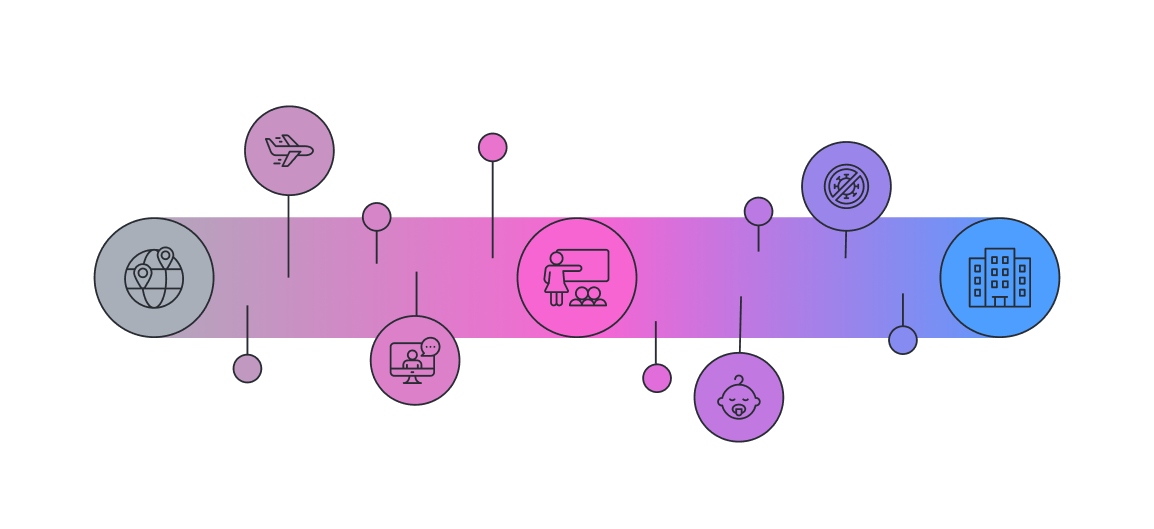
How Agile teams can prioritize “individuals and interactions” in a hybrid environment
Reading time: about 9 min
Topics:
The world has changed a lot since the creation of the Agile Manifesto in 2001. At that time, dispersed teams were an anomaly. Today, they’re the norm. Technology has evolved rapidly as well, with automation and AI changing how teams operate. So, a question emerges: How can we continue prioritizing Agile values in a modern world?
One of those values that comes into question is “individuals and interactions over processes and tools.” After all, tools are a necessity to keeping hybrid teams connected.
According to experienced Agile practitioners and some of the original authors of the Agile Manifesto, teams don’t have to abandon this value. They do, however, need to determine how to customize it to fit their working environment.
For modern teams, this means leveraging tools and processes in an intentional way to support the “individuals and interactions” that this value emphasizes. In this article, the Agile Manifesto’s co-authors, as well as seasoned Agile coaches, share strategies for sustaining this Agile value, even on dispersed or hybrid teams.
Setting the stage: What does “individuals and interactions over processes and tools” mean?
The Agile Manifesto was written with the intent to help teams respond to change and better meet customer needs. The idea of valuing “individuals and interactions over processes and tools” emphasizes the importance of collaborative work when responding to change—where team members come together to communicate and share what they have learned, make joint decisions, and reduce reliance on tools and processes.
This isn’t to say that processes and tools aren’t important. It’s just saying that individuals and interactions are more important. Processes and tools should be used to support and facilitate effective collaboration among team members rather than dictating rigid procedures.
“The emphasis is on empowering individuals within the team to communicate openly, share ideas, and work together seamlessly to achieve common goals,” said Bryan Stallings, chief evangelist at Lucid and experienced Agile coach. “Processes and tools should be adaptable and responsive to the dynamic nature of software development, serving as enablers rather than constraints.”
These values are intentionally non-prescriptive, leaving room for teams to determine just how they’ll uphold that value. James Grenning, one of the co-authors of the Agile Manifesto, suggested that “teams use the Agile Manifesto as a starting point for conversation, determining what unique needs they must meet.”
What does that look like in a modern workforce?
Today, teams know that tools are critical to hybrid work, but they’re not enough on their own. The tools should be part of a broader strategy to enable teams to work together effectively.
“The more complexity you’re facing—such as when working in a hybrid environment—the harder you have to work at making sure you have enough collaboration going on in the places that are important.”
—Jon Kern, co-author of the Agile Manifesto
The strategy we recommend is digital-first collaboration, which is best described as a guiding philosophy that prioritizes creating digital artifacts to add clarity and context to live collaboration. With digital-first collaboration, the use of digital tools is complemented by a culture that encourages collaboration, communication, and flexibility.
So, it’s not a replacement for in-person (or live but virtual) collaboration, and it’s not just for remote teams. Digital-first collaboration serves as a blueprint for intentionally implementing a strategy that helps sustain Agile values and enables teams to work together better.
“The key is to use technology as an enabler of human connection, not as a replacement for it.”
—Jim Highsmith, co-author of the Agile Manifesto
3 strategies for prioritizing individuals and interactions over processes and tools in a hybrid environment

Strategy #1: Create a virtual hub to bring the team together
Though much of the Agile workflow remains the same, one component is completely different than it used to be. In the words of Stallings:
“We still have our Agile teams. That’s our who. That hasn’t changed. We still have our objectives and a vision that we’re pursuing. That’s our what and our why. We still have our sprint cadence. That’s our when. But for most of us, the thing we no longer have in common is our where.”
To solve this problem, we have to give teams a consistent where. The goal is to have a space where team members can collaborate, contextualize, and coordinate work. The best way to do that is to create a virtual team hub, which aligns with a digital-first philosophy and Agile values.

Lucid offers an ideal solution for this use case. With Lucid, you can build a virtual team hub for coordinating work and facilitating communication. Plus, you’ll be able to make the work visible, which bolsters transparency, alignment, empowerment, and opportunities for reflection and improvement.
Your team hub will serve as a single source of truth, eliminating guesswork in sharing and collaboration. Documents created from the team hub will automatically be accessible to all team members, ensuring the right people can access the right information when needed.
Strategy #2: Support both live and asynchronous collaboration
The future of work is hybrid. Collectively, we’re reaching an understanding that work will never be—and never has been—entirely in-office. Team members might get sick, get stuck in traffic, need to pick up kids, or work from different offices.
Regardless of where your team members are working, they still need a way to get quick feedback and share ideas and findings. So, intentionally supporting hybrid collaboration is essential.

But collaboration should not be synonymous with meetings. Teams will struggle to respond to change effectively if they use scheduled meetings as the only touchpoint. Instead, concentrate on intentionally implementing asynchronous collaboration alongside live meetings.
When both collaboration formats are available and encouraged, teams can seamlessly communicate and collaborate cross-functionally.
Here are a few ways you can support live and asynchronous collaboration for your hybrid team:
-
Encourage team members to set up Zoom working sessions: Provide opportunities for virtual coworking sessions via platforms like Zoom to create an environment where teammates can collaborate in real time, ask questions, and provide quick feedback, mirroring some aspects of in-person collaboration.
-
Embrace asynchronous collaboration: Recognize the challenges posed by differing time zones and work schedules by promoting asynchronous collaboration, which allows team members to collaborate effectively not only during meetings but before and after the meeting as well.
-
Utilize a unified platform for both live and asynchronous collaboration: By using a single platform for activities such as live meetings, planning sessions, retrospectives, and asynchronous updates, teams can effortlessly maintain a cohesive record of discussions, decisions, and plans to reference at any time.
-
Adapt your collaboration strategies: Highsmith suggests that feedback loops are necessary to continuously improve your team’s collaboration. “Regularly hold retrospectives to reflect on what is working and what isn’t, especially concerning communication and collaboration,” said Highsmith. “Use these insights to make iterative improvements.”
When it comes to asynchronous collaboration and using a unified platform for both formats, consider investing in visual collaboration software. Visual collaboration can enhance understanding and facilitate clearer communication of ideas and feedback compared to relying solely on written communication.
Strategy #3: Create and follow team standards for hybrid best practices
Perhaps more importantly than questioning where we work, we should be asking how we’re working. Namely, how we’re collaborating and whether or not it offers an equitable experience to every participant.
This is where collaboration equity comes in. Collaboration equity means to give all participants—no matter where they’re working from, their working style, or their seniority level—the opportunity to contribute and participate equally in conversation.
There are a few key pillars to collaboration equity, and all of them can help your team rally around a shared set of standards for hybrid best practices. Those pillars are:
-
Representation equity: Employees are seen, heard, and portrayed equally.
-
Participation equity: Employees can host, present, and participate equally, regardless of location or preferred ways of collaborating.
-
Information equity: Employees have equal and convenient access to documentation and context, including social and cultural information (such as water cooler talk before a meeting if joining virtually).
If you concentrate on structuring your hybrid team standards around these pillars, you’ll create an equitable working environment and empower your team members.
“Let’s not forget: Implementing, interpreting, or applying agile is not a project, program, or event. It’s a commitment to working in a fundamentally different way. It’s a commitment to ‘uncover better ways of doing things and helping others to do it’. Transforming our ways of working is a core business capability.”
—Heidi J. Musser, board member, board advisor, and executive consultant
When you start this process, be sure to incorporate your entire team so every team member feels comfortable and aligned with the set of standards. You might include things such as how you’ll share updates as a team, when you’ll be online if you’re working from another time zone, how you’ll handle conflict, and more.
The goal here isn’t to create strict processes for the team to follow. It’s more about providing clarity and a basic framework to maximize collaboration in complex working environments while still leaving room for experimentation. One of the greatest mistakes Kern sees teams make today is trying to apply more processes and predictability to complex situations.
“For the super complex, innovative, hard to understand, or hard to estimate work, teams need to apply almost excess amounts of collaboration—not more process,” said Kern. “A lot of people are unable to push the boundaries here, probably because they’re following a process.”
Let Lucid streamline collaboration on your hybrid team
As we adapt to hybrid work, we'll rely heavily on tools. There’s no getting around that fact. However, these tools should be seen as a means to amplify individual contributions and streamline team interactions.
Lucid does just that. It ensures everyone's voice is heard, no matter where they are. It provides a virtual hub where teams collaborate seamlessly, bridging live and asynchronous work.
If you’re ready to optimize your Agile meetings for hybrid teams, Lucid is your solution.

Get everything your hybrid team needs to facilitate meetings effectively in this toolkit.
Check it outAbout Lucid
Lucid Software is the leader in visual collaboration and work acceleration, helping teams see and build the future by turning ideas into reality. Its products include the Lucid Visual Collaboration Suite (Lucidchart and Lucidspark) and airfocus. The Lucid Visual Collaboration Suite, combined with powerful accelerators for business agility, cloud, and process transformation, empowers organizations to streamline work, foster alignment, and drive business transformation at scale. airfocus, an AI-powered product management and roadmapping platform, extends these capabilities by helping teams prioritize work, define product strategy, and align execution with business goals. The most used work acceleration platform by the Fortune 500, Lucid's solutions are trusted by more than 100 million users across enterprises worldwide, including Google, GE, and NBC Universal. Lucid partners with leaders such as Google, Atlassian, and Microsoft, and has received numerous awards for its products, growth, and workplace culture.
Related articles
The dos and don’ts of agile documentation
The solution to better documentation isn’t going back to how documentation was approached in the Waterfall days. Teams need to embrace agile documentation that’s visual, living, and adaptable.
The most important workplace collaboration skills today (with tips and courses to improve)
Get tips, resources, and courses to improve the most important collaboration skills in today’s complex, hybrid workforce.
How to sustain the Agile Manifesto values in today’s workforce
Get expert tips on upholding each Agile Manifesto value in complex, hybrid working environments.
[Guide] How to set up your hybrid workplace to maximize collaboration
Every team is a hybrid team. Learn how to set up your hybrid workplace with the right office design and culture to maximize collaboration.
